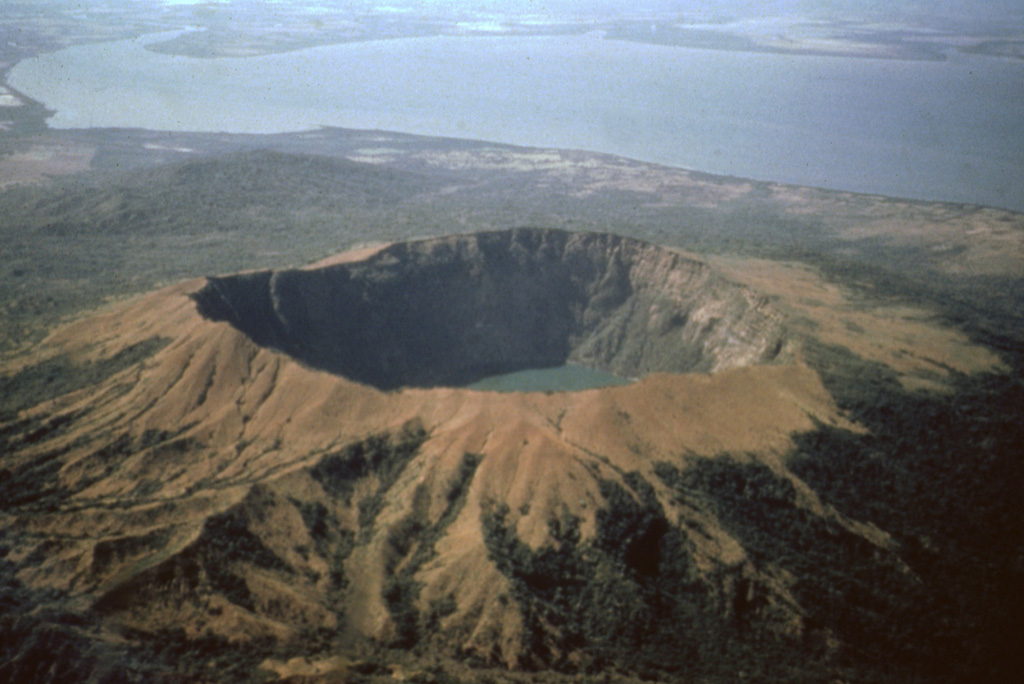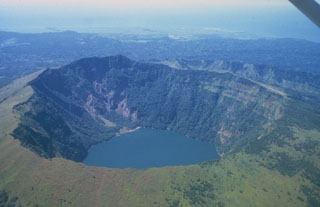Global Volcanism Program | Image GVP-08081

A dramatic aerial view from the NW shows Cosigüina volcano with its 2.4-km-wide caldera. One of Central America's largest historical eruptions began on January 20, 1835. Detonations were heard in Jamaica, Venezuela, and Colombia, and ash fell throughout Central America and southern México. Pyroclastic flows and surges reached the Gulf of Fonseca (background), and fountain-fed lava flows mantled portions of the upper flanks. Although the eruption devastated croplands and livestock, there were few human fatalities.
Photo by Jaime Incer, 1991.
![]() This image is made available under the Creative Commons BY-NC 4.0 license terms.
This image is made available under the Creative Commons BY-NC 4.0 license terms.

Cosigüina
